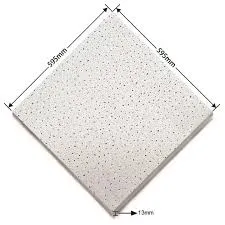9 月 . 28, 2024 07:31 Back to list
T-Bar Suspended Ceiling Grids for Enhanced Interior Design and Acoustic Solutions
Understanding T-Bar Suspended Ceiling Grids An Overview
Suspended ceilings, often referred to as drop ceilings, have become a popular choice for both residential and commercial spaces. Among the various systems available, the T-bar suspended ceiling grid has emerged as one of the most widely used frameworks. This article will delve into the characteristics, advantages, and installation processes associated with T-bar suspended ceiling grids.
What is a T-Bar Suspended Ceiling Grid?
A T-bar suspended ceiling grid is a framework made up of horizontal and vertical components that create a grid-like structure to support ceiling tiles or panels. The 'T' shape of the bars is integral to its name, representing the cross-section of the support framework. The grid suspends below the existing ceiling structure using hangers or wires, allowing for an easy installation and removal of the panels.
Key Features of T-Bar Ceiling Grids
1. Versatility T-bar ceiling grids come in various sizes, styles, and materials, including mineral fiber, metal, and gypsum, enabling customization according to the aesthetic and functional requirements of a space.
2. Acoustic Performance Many ceiling tiles designed for T-bar grids are manufactured to absorb sound, making this system ideal for commercial environments like offices, schools, and hospitals where noise reduction is crucial.
3. Ease of Access The suspended nature of the ceiling allows for easy access to plumbing, electrical wiring, and HVAC systems hidden above the ceiling tile. This can simplify maintenance and renovations.
4. Aesthetic Appeal T-bar ceilings can complement various interior designs. With an array of tile finishes, colors, and textures, designers can achieve almost any desired look.
5. Cost-Effectiveness In comparison to traditional ceilings, T-bar suspended ceilings can be more economical. The materials generally require less labor-intensive installation, and the modular aspect allows for straightforward replacements if tiles become damaged.
t bar suspended ceiling grid

Advantages of T-Bar Suspended Ceiling Grids
1. Installation Efficiency The installation process for T-bar ceilings is relatively straightforward. After planning the layout, the main runners are installed first, followed by cross tees to complete the grid. Once the grid is in place, the tiles are easily laid in the openings.
2. Flexibility Changes in office layout or design are simple since the tiles can be quickly removed and replaced, and new fixtures can be integrated with minimal disruption.
3. Enhanced Thermal Efficiency The air gap created by the suspended ceiling can contribute to better thermal insulation, potentially lowering energy costs.
4. Health and Safety Compliance Many T-bar ceiling tiles are designed to meet safety and health regulations, including fire resistance and moisture resistance to mold and mildew, essential factors for maintaining a safe indoor environment.
5. Reduced Noise Transfer T-bar ceilings, when coupled with the right acoustic tiles, can effectively minimize sound transmission between rooms, enhancing privacy in offices or homes.
Installation Process
The installation process starts with thorough planning, where the dimensions of the room and the desired height of the ceiling are measured. Next, the main runners are fixed to the ceiling with anchors while ensuring they are level. Cross tees are then inserted into the main runners to form a grid. Finally, ceiling tiles are laid into the grid, completing the suspended ceiling. This process can typically be completed in a day, depending on the size of the space.
Conclusion
T-bar suspended ceiling grids offer an effective and versatile solution for various architectural needs. Their combination of functionality, aesthetic appeal, and ease of maintenance makes them a favored choice for both public and private spaces. Whether remodeling an office, updating a retail environment, or creating a home theater, T-bar ceilings provide numerous benefits that can effectively enhance the overall atmosphere of a room. As technology and design continue to evolve, T-bar suspended ceilings are likely to remain a staple in both commercial and residential building strategies.
-
Revolutionizing Interior Design with Ceilings t grid Suspended SystemNewsOct.29,2024
-
Revolutionizing Ceiling Design with ceiling access panel with Gypsum Tile WaterproofNewsOct.29,2024
-
Revolutionizing Interior Design with PVC Gypsum Ceiling: A Comprehensive GuideNewsOct.29,2024
-
Elevating Interior Design with High quality Mineral Fiber Ceiling TilesNewsOct.29,2024
-
Revolutionizing Interior Design with PVC Gypsum Ceiling: A Comprehensive GuideNewsOct.29,2024
-
Elevating Interior Design with High-Quality Mineral Fiber Ceiling Tiles: A Comprehensive GuideNewsOct.29,2024







